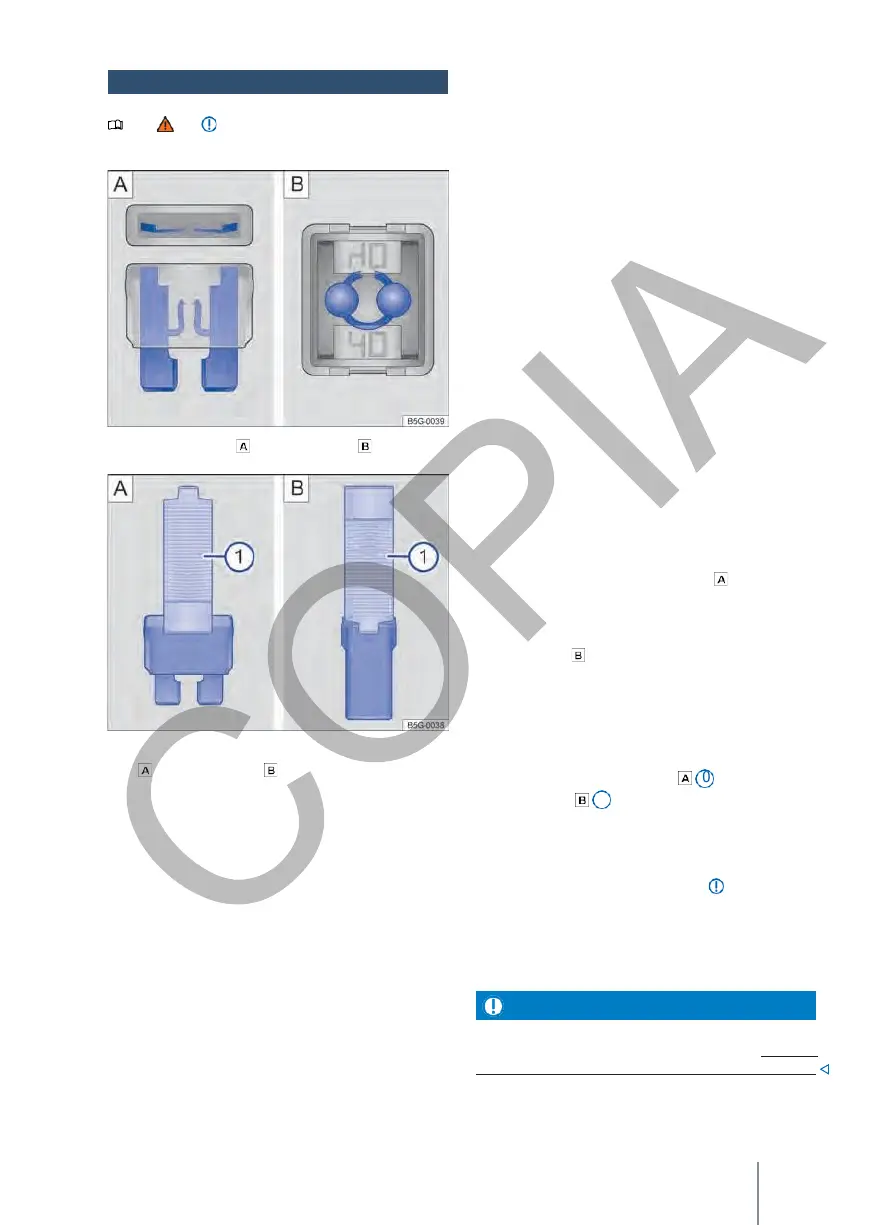Replace blown fuses
Note and at the beginning of this
chapter
on page 230.
Blue 15 amps
Yellow
20 amps
White or colourless
25 amps
Green
30 amps
Light green
40 amps
Fuses
(JCASE)
Blue
Pink
20 amps
30 amps
Green
40 amps
Red 50 amps
Fig. 159 Blown fuse: Flat plug-in fuse. Block fuse.
Fig. 160 Remove or insert the fuse with the
plastic
clips
: Flat plug-in fuse.
Block
fuse
.
Yellow
60 amps
Previous
steps
—
Switch off the ignition, lights and all electrical
consumers.
—
Open the corresponding fuse box
→ p. 230.
How to recognise a blown fuse
—
Illuminate the fuse with a torch. This makes it
easier to recognise if the fuse is blown.
—
You can tell if a flat plug fuse (
ATO®
,
MINI®
) is
blown by the burnt metal strip visible from
above and from the sides
through the
transparent housing → fig. 159 .
—
You can tell if a block fuse (
JCASE®
) is blown by the
burnt metal strip visible from above through the
transparent housing.
→ fig. 159 .
Change
fuses
—
If necessary, remove the plastic clips on the
corresponding fuse box cover.
—
Depending on the type of fuse, move the
corresponding clamps → fig. 160
Fuse types
—
Standard flat plug-in fuses
(
ATO®
)
o → fig. 160
—
Remove the fuse.
sideways over the fuse.
—
Small flat plug-in fuses
(
MINI®
)
—
Block type fuses (
JCASE®
)
Fuse identification by colour
Fuses (ATO -
MINI - MAXI)
Colour Amperage
Black
1 amp
—
If the fuse has blown, replace it with a new
fuse of the same amperage (of the same colour
and rating) and the same size → .
—
After inserting the new fuse, if necessary, fit the
plastic clips back into the cover.
—
Replace the cover or close the fuse box cover.
Lilac 3 amps
Orange
5 amps
Brown
7.5 amps
Red 10 amps
If a fuse is replaced with a higher amperage fuse,
damage may occur elsewhere in the electrical
system.

